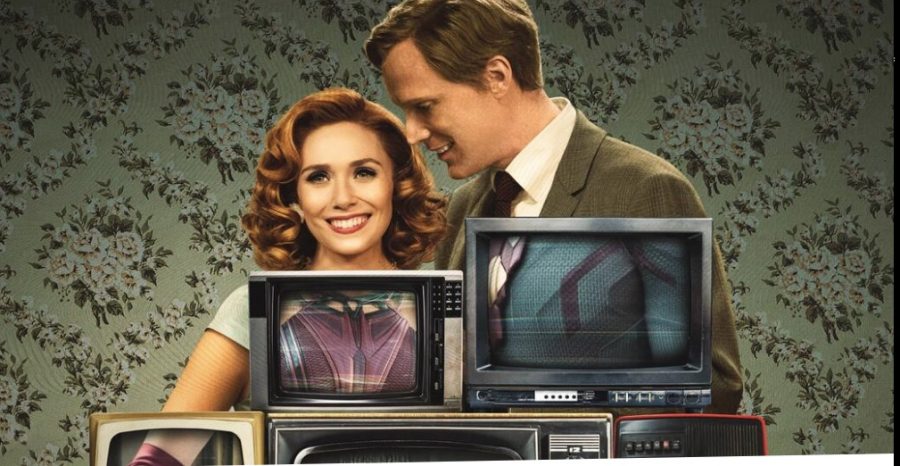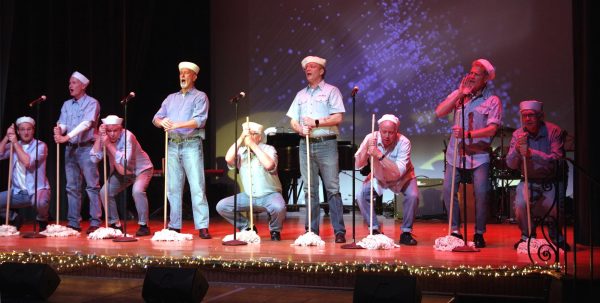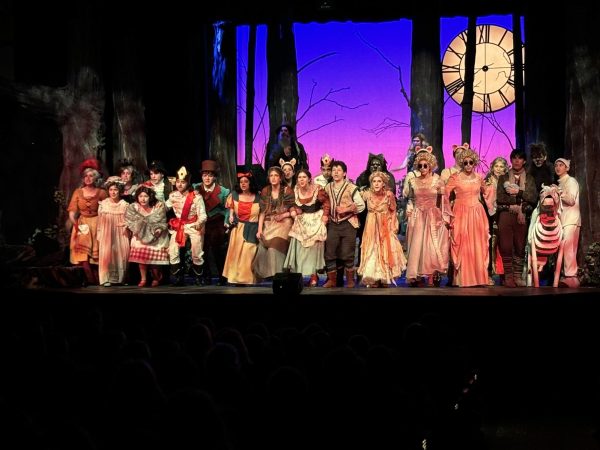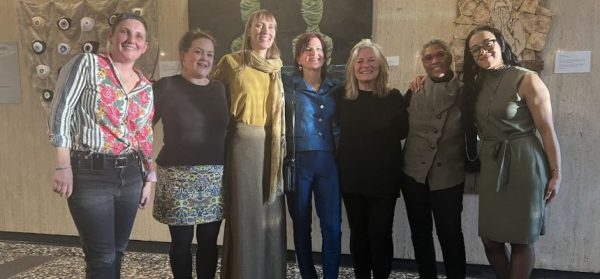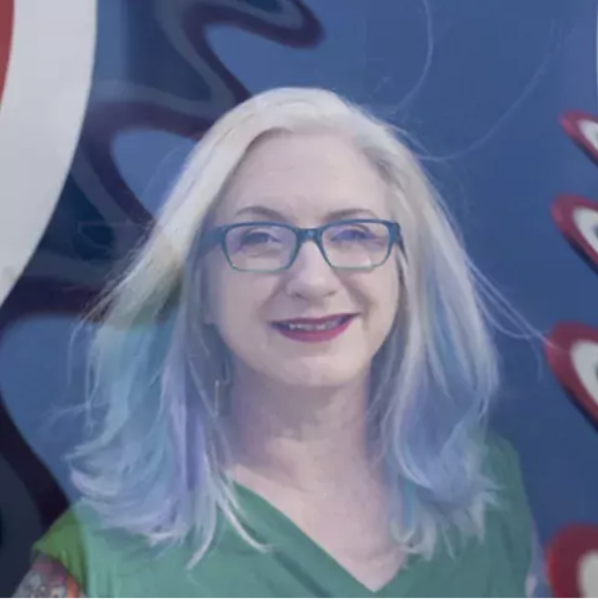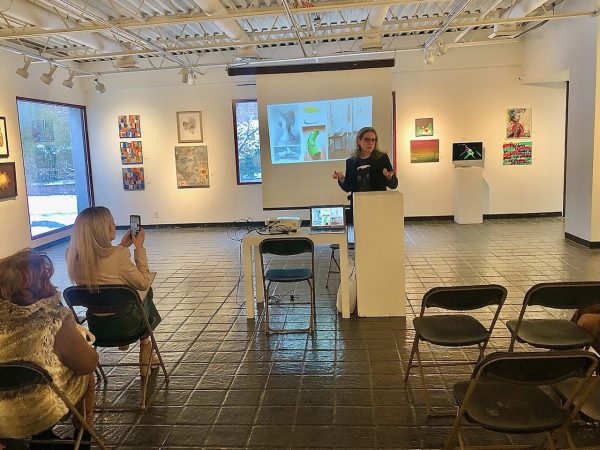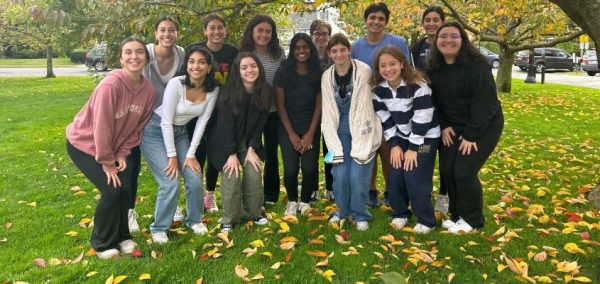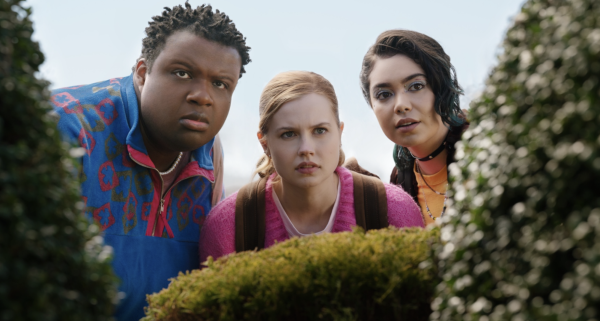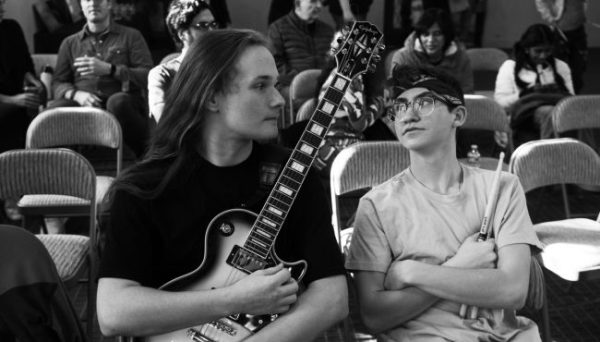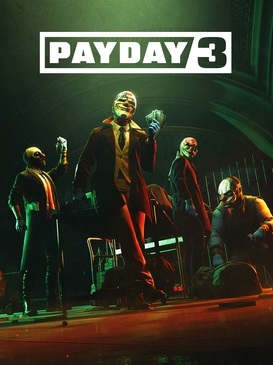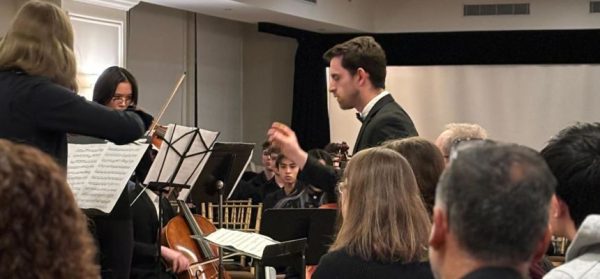Marvel stays true to form with ‘WandaVision,’ captivating sitcom parody that turns into dark superhero journey
Ah, Westview, New Jersey. Even the name itself conjures an image of a charming, quiet suburban town. It is the 1950s. Couples looking to escape the hustle and bustle of big cities are flocking to these places in droves in pursuit of the American Dream — and with the hope of starting a family. Lights up on one of these couples. They are just trying, like all of us, to fit in.
Wait a minute, is that Wanda and Vision? What are two Avengers doing in a place like this?
Now, this wasn’t the narration that played over the opening scene of Marvel’s new show “WandaVision,” but it very well could have been. With a premise that is every bit as confusing as it sounds, “WandaVision” features the titular (super) power couple amidst a backdrop of many popular sitcoms from different decades, including, but certainly not limited to, “The Dick Van Dyke Show,” “Bewitched,” “The Brady Bunch,” “Full House,” “Malcolm in the Middle,” and “The Office,” in order of appearance.
Though they are not the main focus of the show, Marvel takes these sitcom themes to heart, paying homage to them in their own unique way. In the 1950s episode, the show references the physical comedy of “The Dick Van Dyke Show” and other sitcoms of the era when Wanda (Elizabeth Olsen) uses her powers to hastily throw together dinner, levitating pots and pans and mixing ingredients together using only her mind. Later on, the show recreates a scene from “Bewitched” as Wanda fuses her and Vision (Paul Bettany)’s twin beds into one queen-sized bed.
But despite the cheery nature of the shows on which “WandaVision” is based, all is not well in Westview for our two protagonists. Not only do Wanda and Vision struggle to prevent their neighbors from finding out that they have superpowers, but strange occurrences seem to follow them around. When Vision’s boss chokes on his food while over for dinner at Wanda and Vision’s home, his wife turns to Wanda and begins to laugh harder and harder as he struggles to breathe. After Vision uses his powers to save his boss, everything suddenly returns to normal, as if nothing had happened.
After the first few episodes, you’ll likely be asking yourself (if you hadn’t already): “Wait, I thought Vision was dead. How is he here? And why does this entire show take place in a bizarre sitcom world?” But just as those questions get answered, new, even darker ones emerge.
The show gradually shifts from sitcom parody to psychological thriller as we learn more about the true origins and inner workings of Westview. Finally, as the timeline of the show-inside-the-show approaches the present day (and the end of the season), the show’s Marvel colors come through in full force.
We finally break out of the sitcom world entirely and begin to contextualize what we have just witnessed within the all-encompassing MCU timeline. Still, in classic Marvel fashion, several questions are left unanswered — questions that set up the slew of movies set to come out over the next few years.
One of the less-mentioned bright spots of this show is the trio comprised of astrophysicist Darcy Lewis (Kat Dennings), FBI agent Jimmy Woo (Randall Park), and Captain Monica Rambeau (Teyonah Parris), who work as a team to investigate the mysterious happenings in and around Westview. Marvel develops the characters of Darcy and Jimmy far beyond their roles in “Thor: The Dark World” and “Ant-Man and the Wasp,” respectively, where they had limited screen time and were used primarily for comic relief.
In their previous movies, removing Darcy and Jimmy entirely would have had little impact on the plot as a whole. This is not the case in “WandaVision,” as their investigations are instrumental in progressing the show along and helping to answer some of the main questions. Marvel elevates Monica’s character from her role in “Captain Marvel” as well, placing her among the few black women to play a significant role in an MCU production.
As with all Marvel productions, the show features flashy visual effects to illustrate the characters’ powers on display, but “WandaVision” uses the black-and-white nature of ’50s and ’60s sitcoms to use visual effects in an entirely different way. In the black-and-white episodes, certain objects are restored to their true color. This is effective because it is done sparingly and with purpose. For example, a seemingly innocuous toy helicopter that crashes in Wanda and Vision’s yard is restored to color, foreshadowing its importance to the plot later on in the show.
Later, when Wanda accidentally breaks a glass using her powers, cutting her neighbor’s hand, the blood from the cut is restored to color to draw attention to the damage Wanda is capable of causing.
“WandaVision” does what the start of a new phase of movies from a franchise should do. It features Marvel at its best — top-tier visual effects and action scenes, relevant connections to the vast web of MCU movies (as well as several comic book references), a good balance between comedic and serious moments, and yes, fancy-sounding science terminology — but also experiments with new elements, like sitcom parodies complete with disturbing commercials that advertise Marvel-themed products. It ties back into the past canon, but also looks ahead, as the final episode brilliantly sets up both “Captain Marvel 2” and “Doctor Strange in the Multiverse of Madness.”
If “WandaVision” is indicative of the rest of Phase 4, Marvel fans certainly have something to look forward to.
Grade: A-
Vikram Jallepalli is a senior at Pelham Memorial High School. Writing for the Examiner is his first role in journalism. He performs in Sock’n’Buskin...



